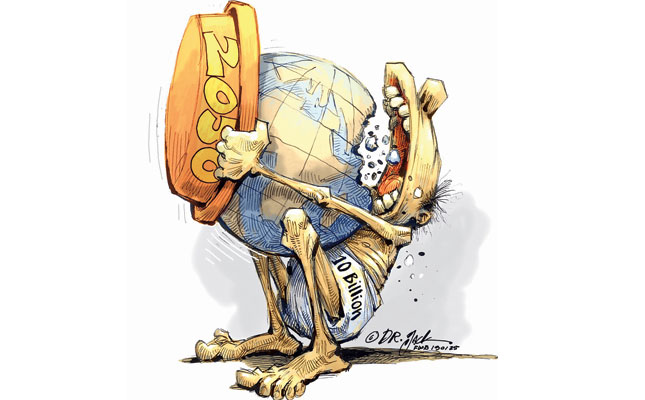
As the global population grows from seven billion in 2010 to a projected 9,8 billion in 2050, and incomes grow across the developing world, overall food demand is on course to increase by more than 50%, and demand for animal-based foods by nearly 70%.
Yet today, hundreds of millions of people remain hungry, agriculture already uses almost half of the world’s vegetated land, and agriculture and related land-use change generate a quarter of annual greenhouse gas (GHG) emissions.
READ Do you know what today’s consumers are eating?
In the publication ‘World Resources Report: Creating a Sustainable Food Future’, researchers propose several options for a sustainable food future by avoiding deforestation, and reforesting or restoring abandoned and unproductive land.
The report sets out how this can be achieved in ways that will also help stabilise the climate, promote economic development, and reduce poverty.
Closing the gaps
Achieving these goals requires closing three great ‘gaps’ by 2050. The first of these is the so-called food gap, which refers to the difference between the amount of food produced in 2010 and the amount necessary to meet likely demand in 2050.
According to the report, this gap is estimated to be 31 000 trillion kilojoules, or 56% more crop energy than produced in 2010.
The second is the land gap, which refers to the difference between global agricultural land area in 2010 and the area required in 2050 even if crop and pasture yields continue to grow at past rates. This gap is estimated to be 593 million hectares, an area nearly twice the size of India.
READ Swartland jam factory turns rejected fruit into profit
Finally, closing the GHG mitigation gap will require addressing the difference between the annual GHG emissions likely from agriculture and land-use change in 2050, which is estimated to be 15 gigatons (Gt) of carbon dioxide equivalent, and a target of 4Gt that represents agriculture’s proportional contribution to holding global warming below 2°C above preindustrial temperatures.
This gap is estimated to be 11Gt. Holding warming below a 1,5°C increase would require meeting the 4Gt target plus reforesting hundreds of millions of hectares of liberated agricultural land.
Some of the solutions suggested in the report to help close these gaps and achieve a sustainable food future include reducing the growth in demand for food and agricultural products; increasing food production without expanding agricultural land; exploiting the reduction of demand on agricultural land to protect and restore forests, savannas, and peatlands; increasing fish supply through improved wild fisheries management and aquaculture; and reducing greenhouse gas emissions from agricultural production.
Reduce demand growth
Closing the food gap will be far more difficult if we cannot slow the rate of growth in demand.
Slowing demand growth requires reducing food loss and waste, shifting the diets of high meat consumers toward plant-based foods, avoiding any further expansion of biofuel production, and improving women’s access to education and healthcare in Africa to accelerate voluntary reductions in fertility levels.
Ruminant livestock (cattle, sheep, and goats) use two-thirds of global agricultural land and contribute roughly half of agriculture’s production-related emissions. Ruminant meat demand is projected to grow 88% between 2010 and 2050.
READ Adaptation key to vegetable farmer’s sustainable growth
Yet, even in the US, ruminant meats (mostly beef) provide only 3% of kilojoules. Closing the land and GHG mitigation gaps requires that, by 2050, the 20% of the world’s population who would otherwise be high ruminant-meat consumers reduce their average consumption by 40% relative to their consumption in 2010.
Limiting ruminant meat consumption to 218kJ/person/day by 2050 would reduce the GHG mitigation gap by half and nearly close the land gap.
Actions to take include improving the marketing of plant-based foods, improving meat substitutes, and implementing policies that favour consumption of plant-based foods.
About a quarter of food produced for human consumption goes uneaten. Loss and waste occur all along the food chain, from field to fork. Reducing food loss and waste by 25% by 2050 would close the food gap by 12%, the land gap by 27% and the GHG mitigation gap by 15%.
Actions to take include measuring food waste, setting reduction targets, improving food storage in developing countries, and streamlining expiration labels.
If bioenergy competes with food production by using food or energy crops or dedicated land, it widens the food, land and GHG mitigation gaps. Biomass is also an inefficient energy source.
Using all the harvested biomass on Earth in the year 2000, including crops, crop residues, grass eaten by livestock, and wood, would provide only about 20% of global energy needs in 2050.
Phasing out existing biofuel production on agricultural lands would reduce the food gap from 56% to 49%. Actions to take include eliminating biofuel subsidies and not treating bioenergy as carbon-neutral in renewable energy policies and GHG trading programmes.
The food gap is driven mostly by population growth, of which half is expected to occur in Africa, and one third in Asia. Most of the world is close to achieving replacement-level fertility by 2050.
Sub-Saharan Africa is the exception, with a current fertility rate above five children per woman and a projected rate of 3,2 in 2050. Actions to take include increasing educational opportunities for girls and expanding access to reproductive health services.
Raise productivity
Increased efficiency of natural resource use is the single most important step toward meeting both food production and environmental goals. This means increasing crop yields at higher than historical (linear) rates, and dramatically increasing output of milk and meat per hectare of pasture, per animal and per kilogram of fertiliser.
If today’s levels of production efficiency were to remain constant until 2050, feeding the planet would entail clearing most of the world’s remaining forests, wiping out thousands more species, and releasing enough GHG emissions to exceed the 1,5°C and 2°C warming targets enshrined in the Paris Agreement, even if emissions from all other human activities were entirely eliminated.
Livestock production per hectare varies significantly from country to country and is lowest in the tropics. Given that demand for animal-based foods is projected to grow 70% by 2050 and that pastureland accounts for two thirds of agricultural land use, it is vital to boost pasture productivity.
An additional 25% rate of output of meat and milk per hectare of pasture between 2010 and 2050 could close the land gap by 20%, and the GHG mitigation gap by 11%.
Actions that farmers can take include improving fertilisation of pasture, feed quality and veterinary care, raising improved animal breeds, and employing rotational grazing.
Governments can set productivity targets and support farmers with financial and technical assistance.
Future yield growth of crops is essential to keep up with demand. Conventional breeding and selecting the best-performing crops based on genetic traits accounted for around half of historical crop yield gains.
New advances in molecular biology offer great promise for additional yield gains by making it cheaper and faster to map genetic codes of plants, test for desired DNA traits, purify crop strains, and turn genes on and off.
Actions to take include significantly increasing public and private crop-breeding budgets, especially for ‘orphan’ crops such as millet and yam, which are regionally important but not traded globally. – Denene Erasmus
The views expressed in our weekly opinion piece do not necessarily reflect those of Farmer’s Weekly.
This is an edited excerpt from the ‘World Resources Report: Creating a sustainable food future’, published by the World Resources Institute.











